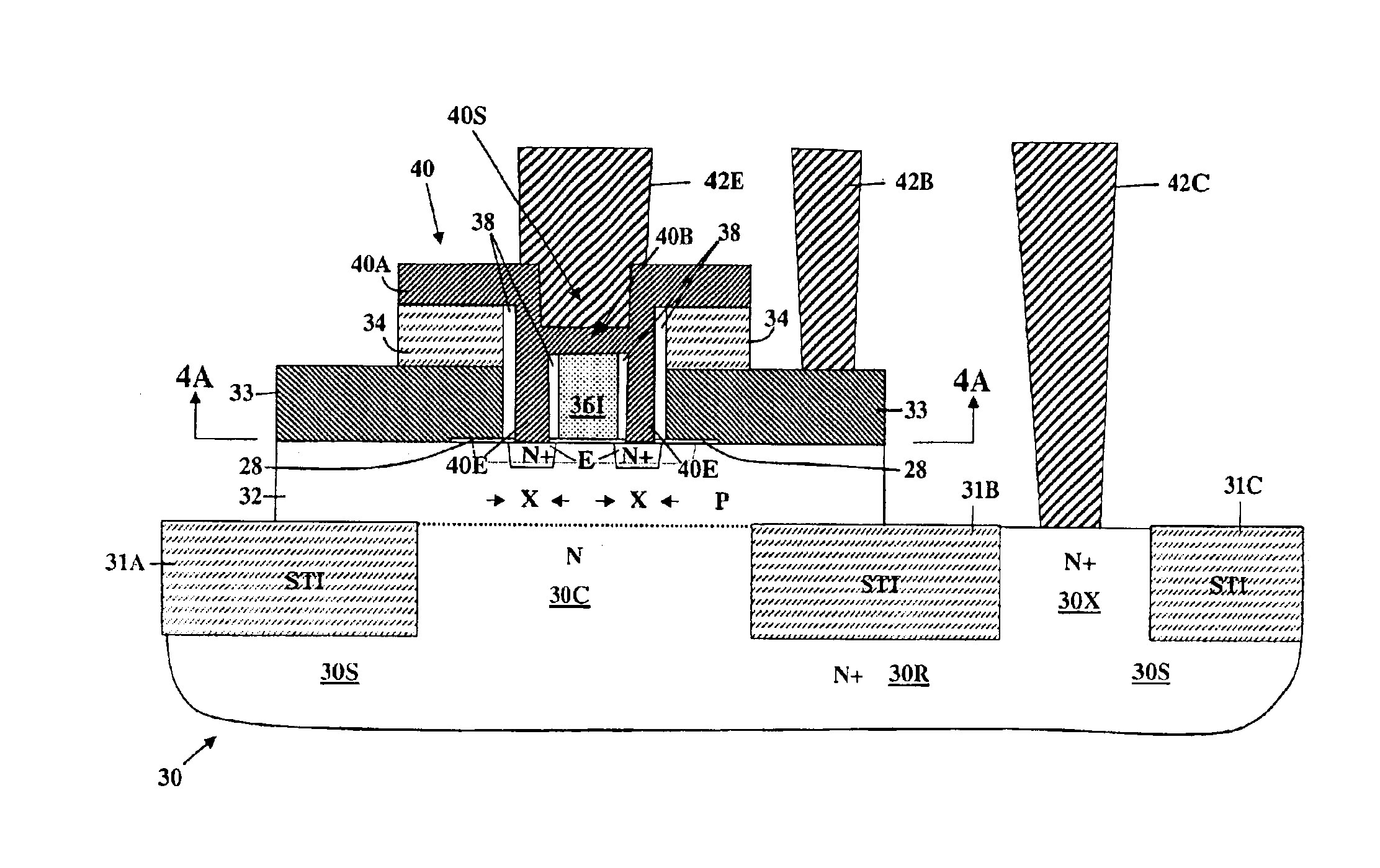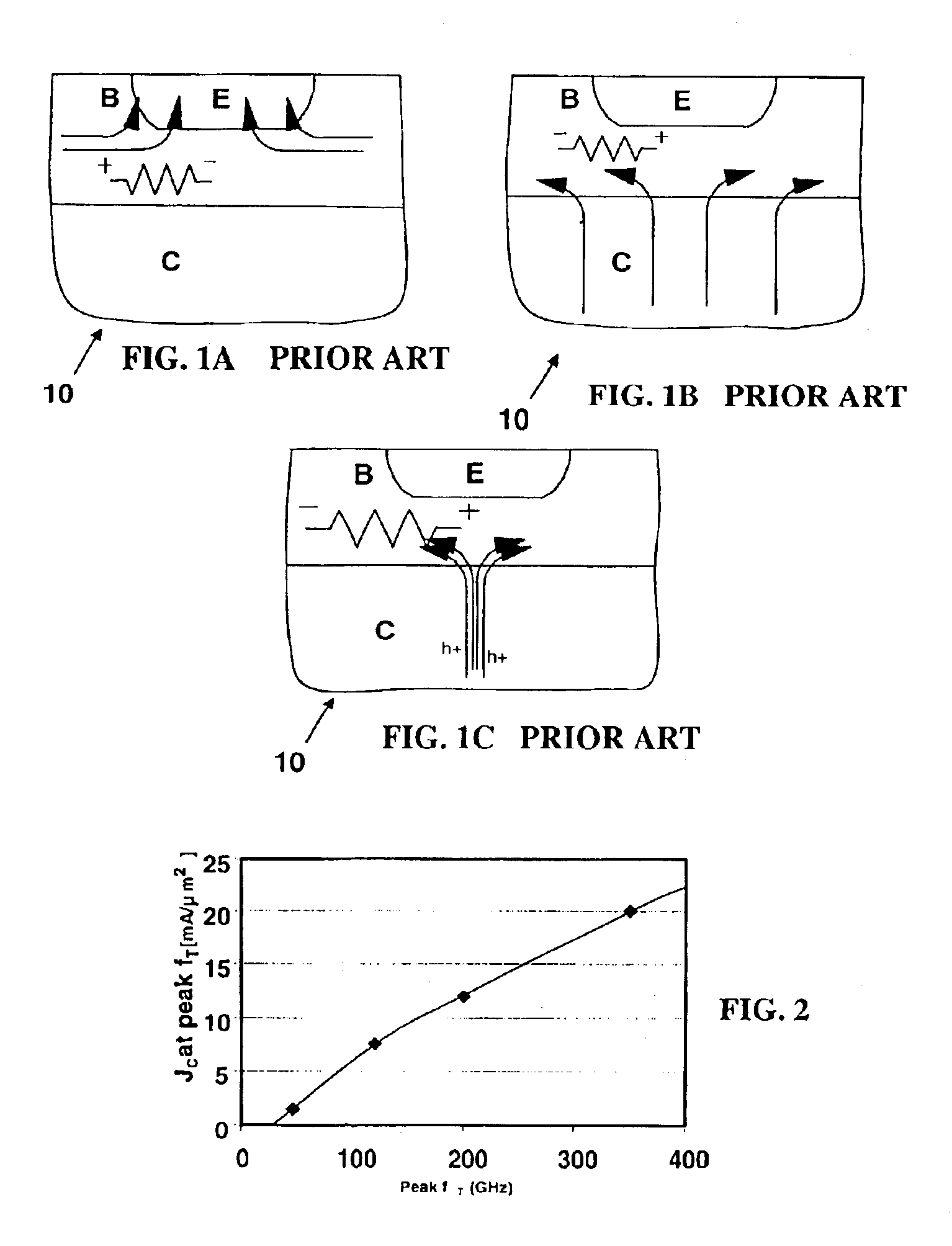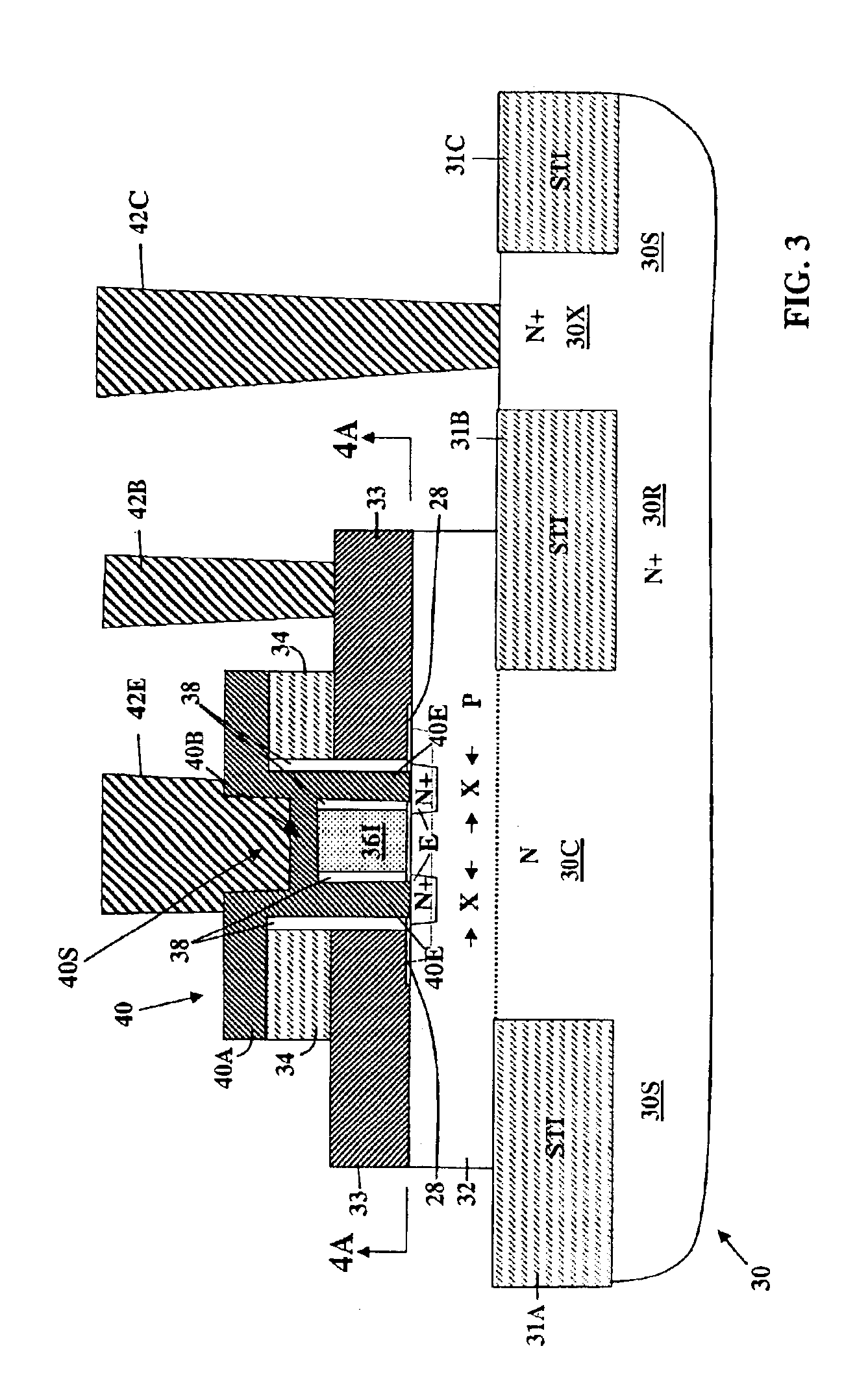Method for creation of a very narrow emitter feature
a technology of emitter structure and emitter, which is applied in the field of creating a very narrow emitter feature, can solve the problems of increasing the self-heating of the device, increasing the avalanche multiplication of the increased electric field, and changing the collector of the bipolar transistor with potentially negative side effects, etc., and achieves low emitter resistance, high-performance device operation, and high voltage
- Summary
- Abstract
- Description
- Claims
- Application Information
AI Technical Summary
Benefits of technology
Problems solved by technology
Method used
Image
Examples
Embodiment Construction
FIG. 3 shows a bipolar transistor 30 comprising a silicon semiconductor substrate 30S, which is doped with N type dopant, in which a collector region 30C is formed and on which an intrinsic base 32 is formed with dual intrinsic emitter regions E that are juxtaposed thereof. The dual intrinsic emitter regions E are connected to dual extrinsic emitter connectors 40E on either side of a dielectric island 361 and a portion of an etch stop region 28. A plurality of Shallow Trench Isolation (STI) regions 31A, 31B and 31C are formed spaced apart in the surface of the substrate 30S. The collector region 30C is formed between STI regions 31A and 31B in the substrate 30S. The intrinsic base 32 (base layer B) of the bipolar transistor 30 is formed on top of the left portion of the substrate 30S bridging across the collector region 30C and most of the two STI regions 31A and 31B leaving margins thereof not covered by the intrinsic base 32.
The dual extrinsic emitter regions E are formed in the s...
PUM
 Login to View More
Login to View More Abstract
Description
Claims
Application Information
 Login to View More
Login to View More - R&D
- Intellectual Property
- Life Sciences
- Materials
- Tech Scout
- Unparalleled Data Quality
- Higher Quality Content
- 60% Fewer Hallucinations
Browse by: Latest US Patents, China's latest patents, Technical Efficacy Thesaurus, Application Domain, Technology Topic, Popular Technical Reports.
© 2025 PatSnap. All rights reserved.Legal|Privacy policy|Modern Slavery Act Transparency Statement|Sitemap|About US| Contact US: help@patsnap.com



